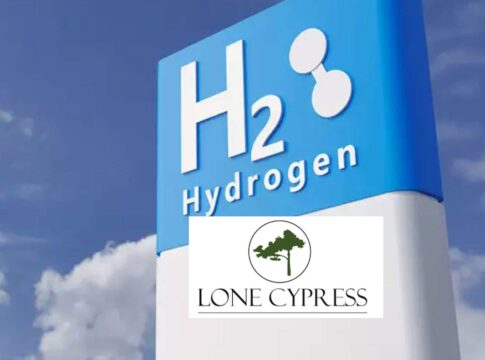The Fuel Cell Vehicle Market Is Growing – Fast
But that decade came and went.
Now, 14 years later, fuel cell technology is far more economical and scalable for commercial use.
The cost of FCVs have plunged over 65% over the last decade – especially for buses – on the back of innovations and production improvements.
The increased affordability for hydrogen powered FCVs now makes it a much more attractive fuel source for everyday use.
Because of this, the global FCV market is set to grow from $2.5 billion in 2022 to over $30 billion by 2032 – which is more than 25% compounded annually.
This rapid growth in FCVs has many tailwinds behind it.
Stricter vehicle emission regulations.
Government investments and subsidies in the development of FCVs and green hydrogen.
The growing adoption of passenger FCVs in Asia – especially Japan and South Korea.
The transition for companies shifting towards FCV’s which offer greater efficiency than electric vehicles – especially for long-haul and bulk transportation.
As costs have reduced for commercial use, different administrations around the world have set ambitious targets to increase the number of FCVs on the roads.
And that means more hydrogen is required to power these FCVs.
Companies And The “Smart Money” Are Diving Into Hydrogen
With governments pushing billions into green hydrogen infrastructure and investment, companies and venture capital (VCs) have already started shifting towards this new market.
For instance, VC firms invested $2.6 billion in 192 hydrogen startups last year.
Since 2014, the number of annual VC hydrogen deals has more than tripled as PE deal counts in hydrogen-related companies quadrupled.
Major international companies – struggling to reduce their carbon output – have already been striking green hydrogen deals left and right.
Last year, Amazon signed an agreement with Plug Power to supply 11,000 tons per year of green hydrogen for its transportation and building operations starting in 2025.
Meanwhile, around the same time, Walmart struck a deal with Plug Power to supply enough green hydrogen to help fuel as many as 9,500 machines across their distribution and fulfilment centers.
This is just the tip of the iceberg of companies investing in green hydrogen and FCVs.
And while this trend is set to accelerate amid decarbonization enforcement, hydrogen-related companies are getting huge amounts of government subsidies to make sure they can deliver.
Just last month, in July 2023, Nikola Corporation – a global leader in zero-emissions transportation and energy infrastructure – received $58.2 million in grants to support seven hydrogen refueling stations located along the California freight corridors.
Let’s Talk About California
California has spearheaded the push into hydrogen – subsidizing and aggressively building-out of the state’s hydrogen infrastructure in recent years.
According to S&P Global – by the end of 2022, there were about 62 hydrogen refueling stations across the state collectively capable of supporting a fleet of about 51,000 light-duty FCEVs. A 2018 executive order issued by former California Governor Jerry Brown set a target to expand the network to 200 stations by 2025.
Due to this investment, California’s average daily hydrogen dispensed per quarter has increased more than 7500% in the last few years (since 2016).
With California being the largest state per GDP ($3.5 trillion economy – which is even bigger than most developed countries), this is setting the trend for the rest of the U.S. in hydrogen.
The only issue right now crimping hydrogen growth from compounding even faster is that there’s still a limited amount of reliable hydrogen supply.
Last year, the California Fuel Cell Partnership stressed the need to shift the market’s focus from building refueling stations to ensuring stations are not frequently running out of supply.
This has become the biggest thorn in the side of the hydrogen market – there’s just not enough green hydrogen available.
This has spurred further development and investment into scaling-out green hydrogen.
But what’s most important here for green hydrogen is just how much cheaper it’s becoming over the next decade.
McKinsey reported that at a production cost of approximately $2 per kilogram, clean hydrogen will become very competitive in many sectors.
It will soon cost less to produce green hydrogen (leaving no greenhouse gas byproducts) than the current grey (dirty) hydrogen method.
Further government subsidies and support are critical to lowering these costs, which they’re fully committed to achieving.
Hydrogen Is Ready To “Combust”
With the macro agenda pushing more clean energy, hydrogen is set to play a crucial role in achieving these lofty net-zero targets.
Meanwhile, the micro picture has shown a significant reduction in costs for both fuel cells and green hydrogen production.
As economies of scale come into play, advancements in technology continue, and investments pour into research and infrastructure, the era of hydrogen-powered transportation, industry, and energy generation is right in front of us.
The inflection point of favorable factors – from greater environmental awareness to policy-driven incentives – has paved the way for hydrogen’s widespread adoption.
The transformative potential of hydrogen is clear: powering vehicles with water vapor emissions, stabilizing renewable energy grids, decarbonizing heavy industries, and revolutionizing our energy landscape.
This shift is no longer a distant possibility; it’s a tangible reality gaining momentum by the day.
Disclosure: Owners, members, directors and employees of carboncredits.com have/may have stock or option position in any of the companies mentioned: AMLI
Carboncredits.com receives compensation for this publication and has a business relationship with any company whose stock(s) is/are mentioned in this article
Additional disclosure: This communication serves the sole purpose of adding value to the research process and is for information only. Please do your own due diligence. Every investment in securities mentioned in publications of carboncredits.com involve risks which could lead to a total loss of the invested capital.
Please read our Full RISKS and DISCLOSURE here.
The post The Fuel Cell Vehicle Market Is Growing – Fast appeared first on Carbon Credits.



